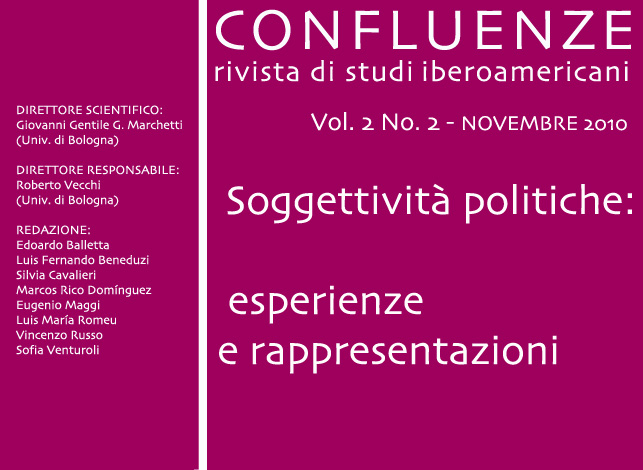La guerrilla de las imágenes: EZLN y fotografía
DOI:
https://doi.org/10.6092/issn.2036-0967/2002Abstract
In this essay I will propose an historical analysis of the visual discourse of the Mexican guerrilla movement Zapatista Army for National Liberation (EZLN). I argue that this discourse should be understood as a creation of a collective imaginary of the “militant subject” inscribed in a long national and Latin American guerrilla tradition. Starting with an iconological analysis of a series of photographs taken from the book “Corte de Caja” (Castellanos and Trabulsi, 2008), I'll indicate a number of problems concerning the use of images as a source (or “testimony”), with the aim to re- construct the historical genealogy of the EZLN. Keywords: guerrilla, EZLN, Latin America, visual discourse, genealogy. En este ensayo propongo un análisis histórico del discurso visual del Ejército Zapatista de Liberación Nacional (EZLN) como creación de un imaginario colectivo sobre el “sujeto militante” inscrito en la larga tradición guerrillera nacional y latinoamericana. A partir del análisis iconológico de un conjunto de fotografías del libro Corte de Caja (Castellanos y Trabulsi, 2008), señalaré una serie de problemas que nos pueden ayudar a usar las imágenes como fuentes (como “testimonios”) con el fin de re-construir la genealogía histórica del Ejército Zapatista de Liberación Nacional (EZLN). Palabras claves: guerrilla, EZLN, America Latina, discurso visual, genealogía.Downloads
Published
2010-12-20
How to Cite
Susi, A. (2010). La guerrilla de las imágenes: EZLN y fotografía. Confluenze. Rivista Di Studi Iberoamericani, 2(2), 146–160. https://doi.org/10.6092/issn.2036-0967/2002
Issue
Section
DOSSIER
License
Copyright (c) 2010 Anna Susi
The copyrights and publishing rights of all the texts on this journal belong to the respective authors without restrictions.
This journal is licensed under a Creative Commons Attribution 4.0 International License (full legal code).
See also our Open Access Policy.
Metadata
All the metadata of the published material is released in the public domain and may be used by anyone free of charge. This includes references.
Metadata — including references — may be re-used in any medium without prior permission for both not-for-profit and for-profit purposes. We kindly ask users to provide a link to the original metadata record.






